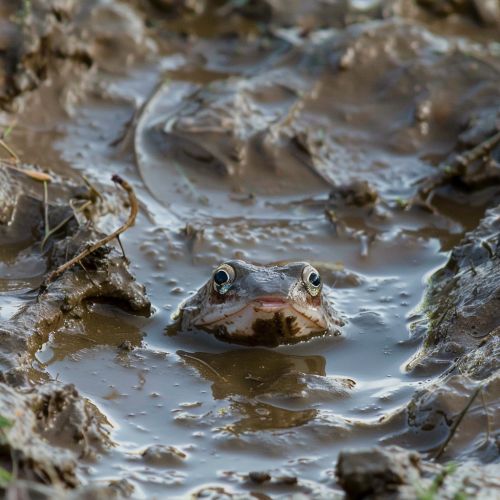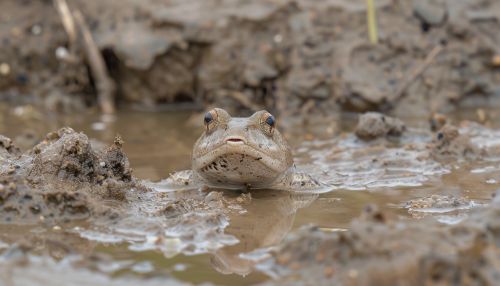Mudskipper: Difference between revisions
(Created page with "== Overview == The Mudskipper is a type of fish belonging to the subfamily Oxudercinae, within the family Gobiidae, which also includes gobies. These amphibious fish are known for their unique ability to live both in water and on land, and are found in tropical, subtropical, and temperate regions around the world. <div class='only_on_desktop image-preview'><div class='image-preview-loader'></div></div><div class='only_on_mobile image-preview'><div class='image-prev...") |
No edit summary |
||
| (One intermediate revision by the same user not shown) | |||
| Line 3: | Line 3: | ||
The [[Mudskipper]] is a type of fish belonging to the subfamily Oxudercinae, within the family Gobiidae, which also includes gobies. These amphibious fish are known for their unique ability to live both in water and on land, and are found in tropical, subtropical, and temperate regions around the world. | The [[Mudskipper]] is a type of fish belonging to the subfamily Oxudercinae, within the family Gobiidae, which also includes gobies. These amphibious fish are known for their unique ability to live both in water and on land, and are found in tropical, subtropical, and temperate regions around the world. | ||
[[Image:Detail-79099.jpg|thumb|center|A mudskipper on a muddy shoreline, with its eyes and mouth above the surface.|class=only_on_mobile]] | |||
[[Image:Detail-79100.jpg|thumb|center|A mudskipper on a muddy shoreline, with its eyes and mouth above the surface.|class=only_on_desktop]] | |||
== Description == | == Description == | ||
Latest revision as of 02:38, 17 May 2024
Overview
The Mudskipper is a type of fish belonging to the subfamily Oxudercinae, within the family Gobiidae, which also includes gobies. These amphibious fish are known for their unique ability to live both in water and on land, and are found in tropical, subtropical, and temperate regions around the world.


Description
Mudskippers are small to medium-sized fish, typically ranging in length from 10 to 20 centimeters. They have a distinctive appearance, with a flattened body and large, protruding eyes that are positioned on top of their head. This allows them to keep an eye out for predators while their body is submerged in water or mud. Their skin is usually a muddy brown color, which provides excellent camouflage against their typical habitats.
Anatomy and Adaptations
Mudskippers possess several unique adaptations that allow them to survive in their unusual habitats. Their pectoral fins are strong and flexible, allowing them to 'skip' or crawl across muddy surfaces. These fins are also used for digging burrows in the mud, where they can retreat during high tide or to escape predators.
One of the most remarkable adaptations of mudskippers is their ability to breathe air. They do this through a combination of their gills, their skin, and the lining of their mouth and throat. When on land, they keep their gills moist by periodically returning to water or by taking in mouthfuls of air or water, which they then hold in their gill chambers.
Behavior
Mudskippers are diurnal, meaning they are active during the day. They are known for their territorial behavior, with males often engaging in displays of aggression to defend their burrows and surrounding area. These displays can include a variety of behaviors, such as fin flapping, mouth gaping, and body flipping.
During the breeding season, males will also perform elaborate courtship displays to attract females. These can include visual signals, such as color changes and fin displays, as well as auditory signals, such as vocalizations.
Diet
Mudskippers are omnivorous, feeding on a variety of food sources. Their diet primarily consists of small invertebrates, such as insects, worms, and crustaceans, which they hunt on the mudflats during low tide. They also consume plant matter, including algae and detritus.
Distribution and Habitat
Mudskippers are found in a variety of habitats, including mangrove forests, tidal flats, and estuaries. They are most commonly found in the Indo-Pacific region, but some species are also found in West Africa and the Atlantic coast of South America.
Conservation Status
While many species of mudskippers are common and widespread, some are considered vulnerable or endangered due to habitat loss and degradation, particularly from coastal development and pollution.
